DMM Aneng M10
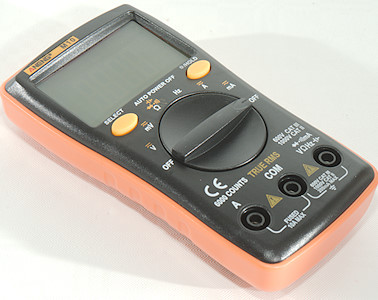
This is a cheap DMM with all common function.
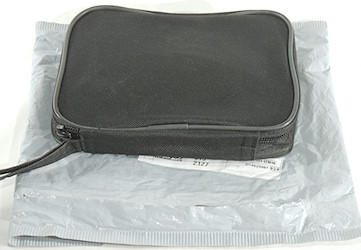
I got it in a plastic envelope.
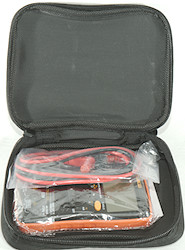
The meter and all accessories was protected in a pouch.
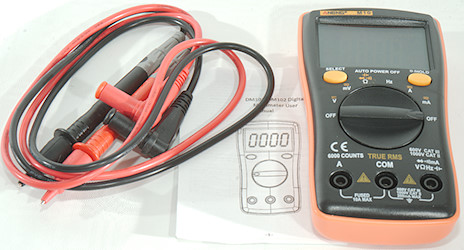
It included the DMM, a pair of probes and a manual.


The standard probes has removable tip covers.
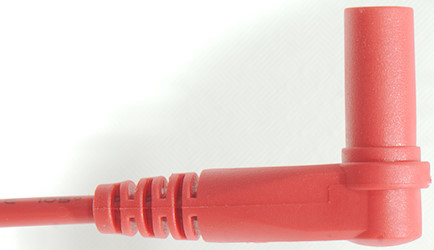
The shrouded plug is the slight short type.
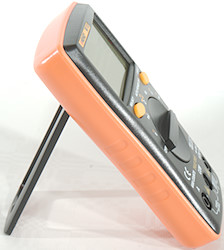
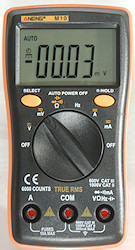
The meter is very light and smooth, i.e. it always requires some counter force when using the rotary switch.
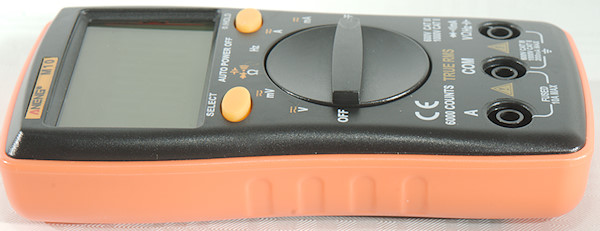
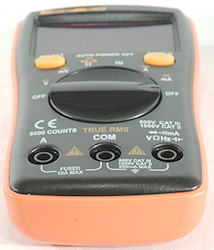

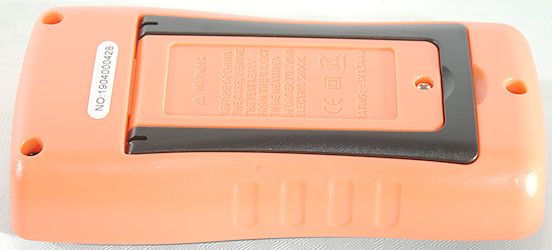
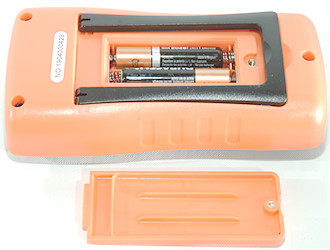
Display
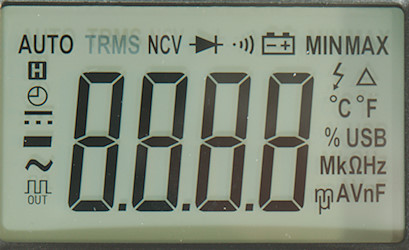
The above picture shows all the segments on the display. Not all are used.
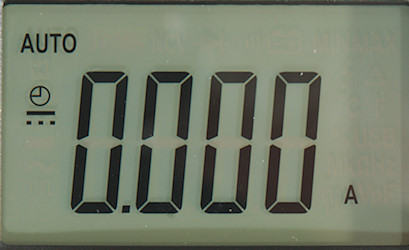
Typical display during usage, it will show the number and what measurement is selected.
Functions

Buttons:
- Select: Select the ranges printed with yellow
- Hold: Freeze the display, hold down to turn backlight on.
Rotary switch:
- Off: Meter is turned off
- V: Show voltage, using the yellow button will change between VDC and VAC
- mV: Show millivolt, using the yellow button will cycle between VDC and VAC
- ohm: Resistance, continuity, diode and capacitance
- Hz: Frequency and duty cycle (Use SELECT to change).
- A: High current DC and AC.
- mA: Low current DC and AC, due to the PTC protection this range only works up to 200mA
- Off: Meter is turned off
Input
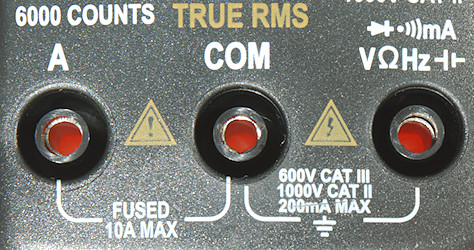
- A: High current ranges
- COM: The common terminal for all ranges.
- xxx: All other ranges, including mA. The maximum of 200mA is marked here.
Measurements
- Volt and frequency
- 1 VAC is 5% down at 2.4kHz (RMS will not work at the frequency).
- At 1Vrms input frequency range is from 1.1Hz to 6MHz
- At 2Vrms input frequency range can be stretched to 14MHz
- Input impedance is 10-11Mohm on DC and AC
- mV range is 5Mohm up to about 2V then it drops to a few kOhm, depending on voltage.
- Frequency counter and duty cycle works without zero crossing in Hz range.
- Duty cycle works from 5% to above 95% at 100kHz with 4Vpp (1Vpp do not work), precision is within 0.7.
- Hz input impedance is 1Mohm up to about 2V where it is clamped after the PTC
- Current
- uA range is protected with 200mA PTC.
- 10A range is unfused.
- 10A range has audible alarm at 20A
- Ohm, continuity, diode and capacitance
- Ohm needs about 2.7s to measure 100ohm
- Ohm voltage is 1.05V open and 0.31mA shorted
- Continuity is fast (About 15ms).
- Continuity beeps when resistance is below 50ohm.
- Continuity is 2.11V open and 0.31mA shorted
- Diode voltage is 3.96V, display up to 3.3V with 0.34mA, maximum current is 2.0mA shorted
- 10uF takes about 2.2 seconds to measure.
- 11000uF takes about 9 seconds to measure.
- Miscellaneous
- Current consumption of meter is 1.1mA to 2.4mA depending on range (6mA with backlight)
- Meter works down to 2.2V where it turns off, battery symbol show at 2.3V.
- Readings are stable with changing battery voltage.
- Backlight only works down to about 2.6V where it is fairly dim.
- Viewing angle is good, except from the top.
- Display updates around 3 times/sec
- Backlight will automatic turn off in about 30 seconds.
- Plugs with full size shroud cannot be fully seated.
- Will automatic turn power off in about 16 minutes.
- The meter usual will show the final value in one or two display updates.
- Weight is 119g without accessories, but with batteries.
- Size is 130 x 70 x 31mm
- Probes
- Probe resistance 52mOhm for one.
- Probe wire is fairly soft and 67cm long.

A look at the capacitance measurement waveform while measuring 1uF.
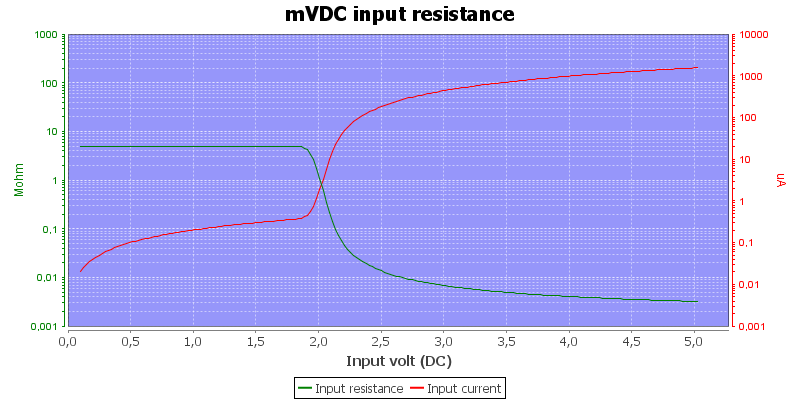
mVDC input resistance, mVAC is similar.

Frequency input impedance at different voltages.

mA current input uses a 200mA PTC as protection, this makes it impossible to use the full range.
High DC voltage can block for AC readings.
Tear down
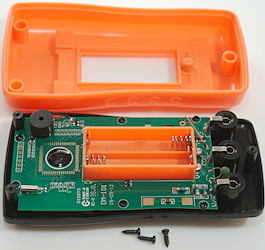
I had to remove 3 screws to open the meter.
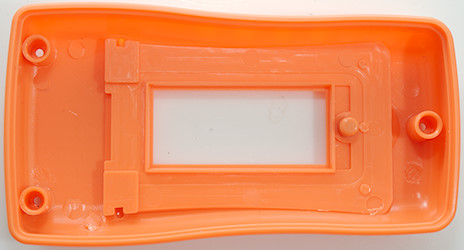
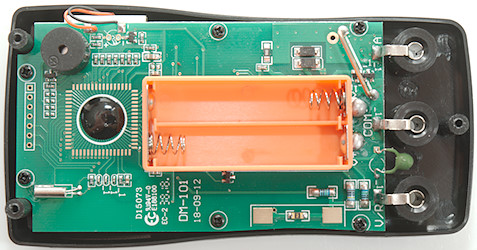
I cannot see the 10A fuse that is specified on the front of the meter.
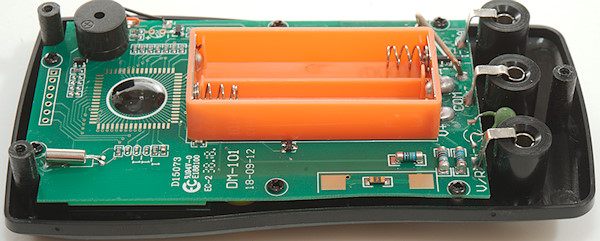
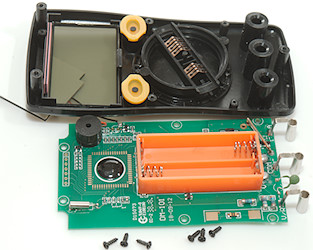
6 more screws to get the circuit board out, the many screws is probably because the circuit board is fairly thin.
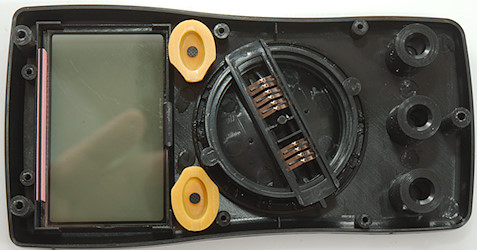
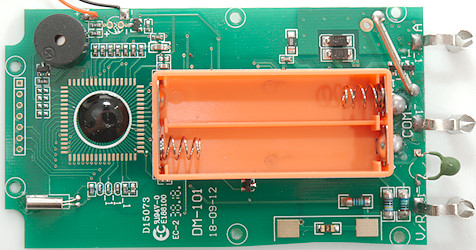
The volt input terminal has 5 paths, two 10Mohm, a 1Mohm, a PTC fuse and a PTC.
The main 10Mohm path is always directly connected to the IC, the secondary 10Mphm path is directly connected to the chip in mV mode. The 1Mohm path is directly connected to the chip in ohm mode. The PTC path has a transistor pair after it in mV, ohm and Hz mode. The PTC fuse is connected to a 1ohm resistor in mA mode (The PTC itself has 2ohm). The 1 ohm current shut has two diodes across it.
There is no trimpots or EEPROM, this means the chip is one of the new type with EEPROM build in.
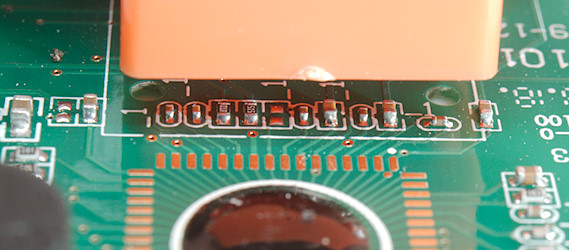
A few more components are hidden below the battery box.
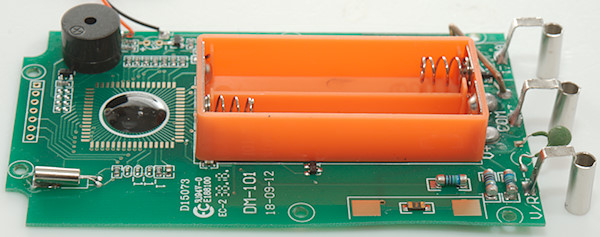
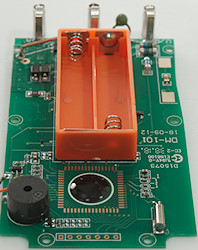
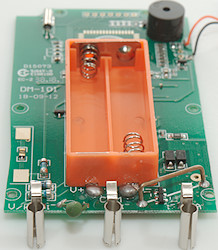
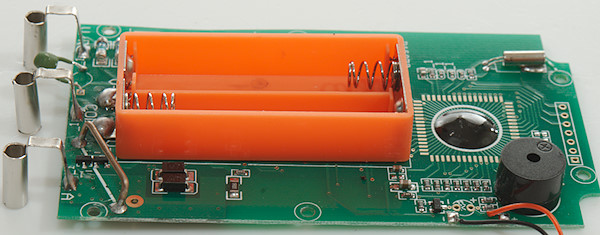
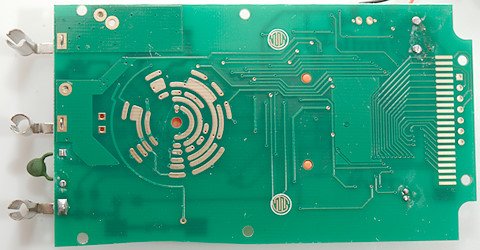
No components on this side, only areas for the rotary switch, the buttons and the LCD display.
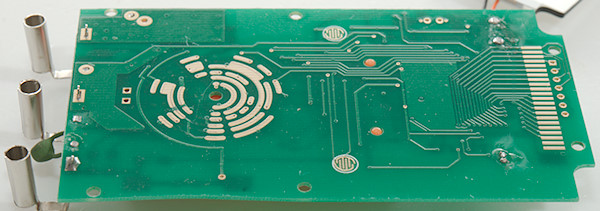
Conclusion
The safety on this meter is fairly bad because the 10A range is unfused, but the front says it has a fuse. The input terminal is also missing transient protection.
This looks like a "upgrade" to the previous generation from Aneng, but with a cheaper design.
The meter works fine enough and has most common ranges, but it is a bit weak in current ranges.
Notes
How do I review a DMM
More DMM reviews



































